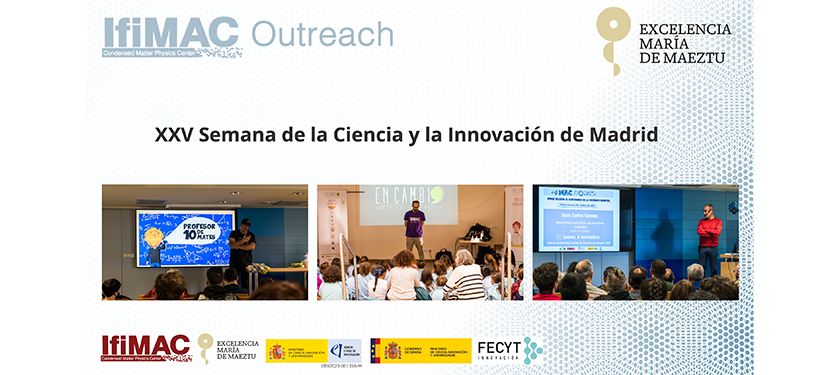
www.ifimac.uam.es
Check out the new article in
#NanoLetters @pubs.acs.org
'From Local to Collective Superconductivity in Proximitized Graphene'. 👇 @cienciasuam.bsky.social @dipcehu.bsky.social @nanogune.bsky.social Institut Néel @cnrs.fr
ifimac.uam.es/research-hig...

Check out the new article in
#NanoLetters @pubs.acs.org
'From Local to Collective Superconductivity in Proximitized Graphene'. 👇 @cienciasuam.bsky.social @dipcehu.bsky.social @nanogune.bsky.social Institut Néel @cnrs.fr
ifimac.uam.es/research-hig...
#quantumyear2025
🗓️ Jueves 4 diciembre📍 Facultad de Ciencias, sala de conferencias del módulo 0, 13:30h | Café: 14:30h ¡Te esperamos!

#quantumyear2025
🗓️ Jueves 4 diciembre📍 Facultad de Ciencias, sala de conferencias del módulo 0, 13:30h | Café: 14:30h ¡Te esperamos!
@apsphysics.bsky.social Physical Review Research👇
www.ifimac.uam.es/research-hig...

@apsphysics.bsky.social Physical Review Research👇
www.ifimac.uam.es/research-hig...

Alberto Fernández-Nieves from @ub.edu (UB) will talk about Boojums, Hedgehogs, Rings and Walls – Defects in Confined Nematics. See you there!
www.ifimac.uam.es/ifimac-semin...

Alberto Fernández-Nieves from @ub.edu (UB) will talk about Boojums, Hedgehogs, Rings and Walls – Defects in Confined Nematics. See you there!
www.ifimac.uam.es/ifimac-semin...

www.crue.org/2025/11/mani...

www.crue.org/2025/11/mani...
www.ifimac.uam.es/ifimac-semin...

www.ifimac.uam.es/ifimac-semin...

@ucdavis.bsky.social
"Tailoring Magnetic Spin Textures in La0.7Sr0.3MnO3-Based Micromagnets" 📷November 18, 12h 📷 @icmm-csic.bsky.social @cienciasuam.bsky.social
www.ifimac.uam.es/ifimac-semin...

@ucdavis.bsky.social
"Tailoring Magnetic Spin Textures in La0.7Sr0.3MnO3-Based Micromagnets" 📷November 18, 12h 📷 @icmm-csic.bsky.social @cienciasuam.bsky.social
www.ifimac.uam.es/ifimac-semin...
@juancarloscuevas.bsky.social as.bsky.social
(part II) para celebrar el #IYQ2025
@cienciasuam.bsky.social ocial
sky.social #quantumyear2025
🍿Disfrútala en nuestro canal de YT
www.ifimac.uam.es/ifimacolloqu...
@juancarloscuevas.bsky.social as.bsky.social
(part II) para celebrar el #IYQ2025
@cienciasuam.bsky.social ocial
sky.social #quantumyear2025
🍿Disfrútala en nuestro canal de YT
www.ifimac.uam.es/ifimacolloqu...
www.uam.es/uam/investig...

www.uam.es/uam/investig...
🙌 ¡Volveremos el curso que viene con nuevas propuestas y muchas ganas!👇 @cienciasuam.bsky.social @uccuam.bsky.social
www.ifimac.uam.es/outreach/spa...

🙌 ¡Volveremos el curso que viene con nuevas propuestas y muchas ganas!👇 @cienciasuam.bsky.social @uccuam.bsky.social
www.ifimac.uam.es/outreach/spa...
Iksu Jang from Karlsruhe Institute of Technology will talk about Elastocaloric effect in nematic and alter magnetic quantum criticality. See you there!
www.ifimac.uam.es/ifimac-semin...

Iksu Jang from Karlsruhe Institute of Technology will talk about Elastocaloric effect in nematic and alter magnetic quantum criticality. See you there!
www.ifimac.uam.es/ifimac-semin...

Terminamos así con nuestras actividades por la #semanadelaciencia #madrimasd Hasta la próxima! @cienciasuam.bsky.social @uam.es

Terminamos así con nuestras actividades por la #semanadelaciencia #madrimasd Hasta la próxima! @cienciasuam.bsky.social @uam.es
INFO: www.ifimac.uam.es/jobs-opportu...

INFO: www.ifimac.uam.es/jobs-opportu...
"Tailoring Magnetic Spin Textures in La0.7Sr0.3MnO3-Based Micromagnets" 🗓️Tuesday, November 18, 12h 📍Module 0, Conference room @cienciasuam.bsky.social
www.ifimac.uam.es/ifimac-semin...

"Tailoring Magnetic Spin Textures in La0.7Sr0.3MnO3-Based Micromagnets" 🗓️Tuesday, November 18, 12h 📍Module 0, Conference room @cienciasuam.bsky.social
www.ifimac.uam.es/ifimac-semin...
continuará su charla para celebrar #IYQ2025 @cienciasuam.bsky.social sky.social
#quantumyear2025
No te pierdas la continuación de "Mecánica cuántica de muchos cuerpos"
www.ifimac.uam.es/ifimac-news/...

continuará su charla para celebrar #IYQ2025 @cienciasuam.bsky.social sky.social
#quantumyear2025
No te pierdas la continuación de "Mecánica cuántica de muchos cuerpos"
www.ifimac.uam.es/ifimac-news/...
Juan Carlos Cuevas @juancarloscuevas.bsky.social ha hecho una fascinante exploración sobre la complejidad cuántica y como nos sigue sorprendiendo.

Juan Carlos Cuevas @juancarloscuevas.bsky.social ha hecho una fascinante exploración sobre la complejidad cuántica y como nos sigue sorprendiendo.
🗣️Un colloquium de @putomikel.bsky.social con motivo del 18N
📆El viernes 14 de noviembre, a las 11.30 (café + charla)
🔗Más: www.icmm.csic.es/en/colloquiu...

🗣️Un colloquium de @putomikel.bsky.social con motivo del 18N
📆El viernes 14 de noviembre, a las 11.30 (café + charla)
🔗Más: www.icmm.csic.es/en/colloquiu...
www.ifimac.uam.es/research-hig...

www.ifimac.uam.es/research-hig...
Martes 11 de noviembre en la Facultad de Ciencias, sala de conferencias del módulo 0, a las 13:00h. @cienciasuam.bsky.social @uam.es
www.semanacienciamadrid.org/actividad/va...

Martes 11 de noviembre en la Facultad de Ciencias, sala de conferencias del módulo 0, a las 13:00h. @cienciasuam.bsky.social @uam.es
www.semanacienciamadrid.org/actividad/va...
👉 www.uam.es/uam/investig...
👉 www.uam.es/uam/investig...
www.uam.es/uam/investig...
www.uam.es/uam/investig...

